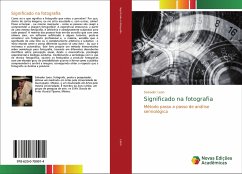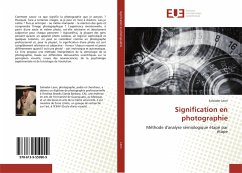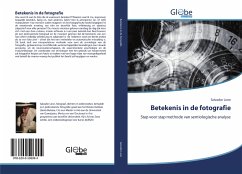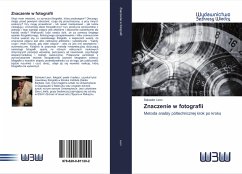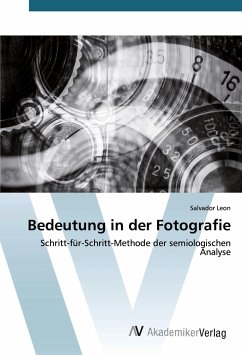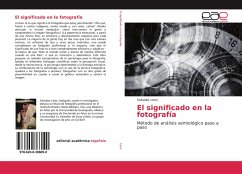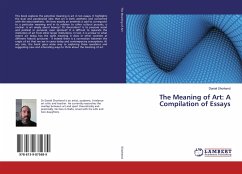
Meaning in photography
Step by step method of semiological analysis
Versandkostenfrei!
Versandfertig in 6-10 Tagen
25,99 €
inkl. MwSt.

PAYBACK Punkte
13 °P sammeln!
How do I know what the photograph I'm perceiving means? Why, facing certain images, do I feel scared and, with others, calm? Can I anticipate -or even manipulate- how people will react and understand the photographic image? Is the emotional experience, from one and the same photo, arbitrary and absolutely subjective for each person? Most people today believe that with an expensive camera, fancy software and a few tutorials, one can consider oneself a professional photographer and, most, believe that the meaning of a photo is either completely arbitrary and subjective -the 'everyone feels and t...
How do I know what the photograph I'm perceiving means? Why, facing certain images, do I feel scared and, with others, calm? Can I anticipate -or even manipulate- how people will react and understand the photographic image? Is the emotional experience, from one and the same photo, arbitrary and absolutely subjective for each person? Most people today believe that with an expensive camera, fancy software and a few tutorials, one can consider oneself a professional photographer and, most, believe that the meaning of a photo is either completely arbitrary and subjective -the 'everyone feels and thinks differently when they see a photo' fallacy- or that it is intrinsic and automatic. This book proposes an interpretative method on semiology for photography, based on different scientific findings about visual perception, from neuroscience, experimental psychology and evolutionary biology. Combining semiology with the use of photographic technique, will help photographers produce photographs with a high degree of predictability as for how the public will understand and feel the image, managing to elicit the response that the photograph is intended to produce.



